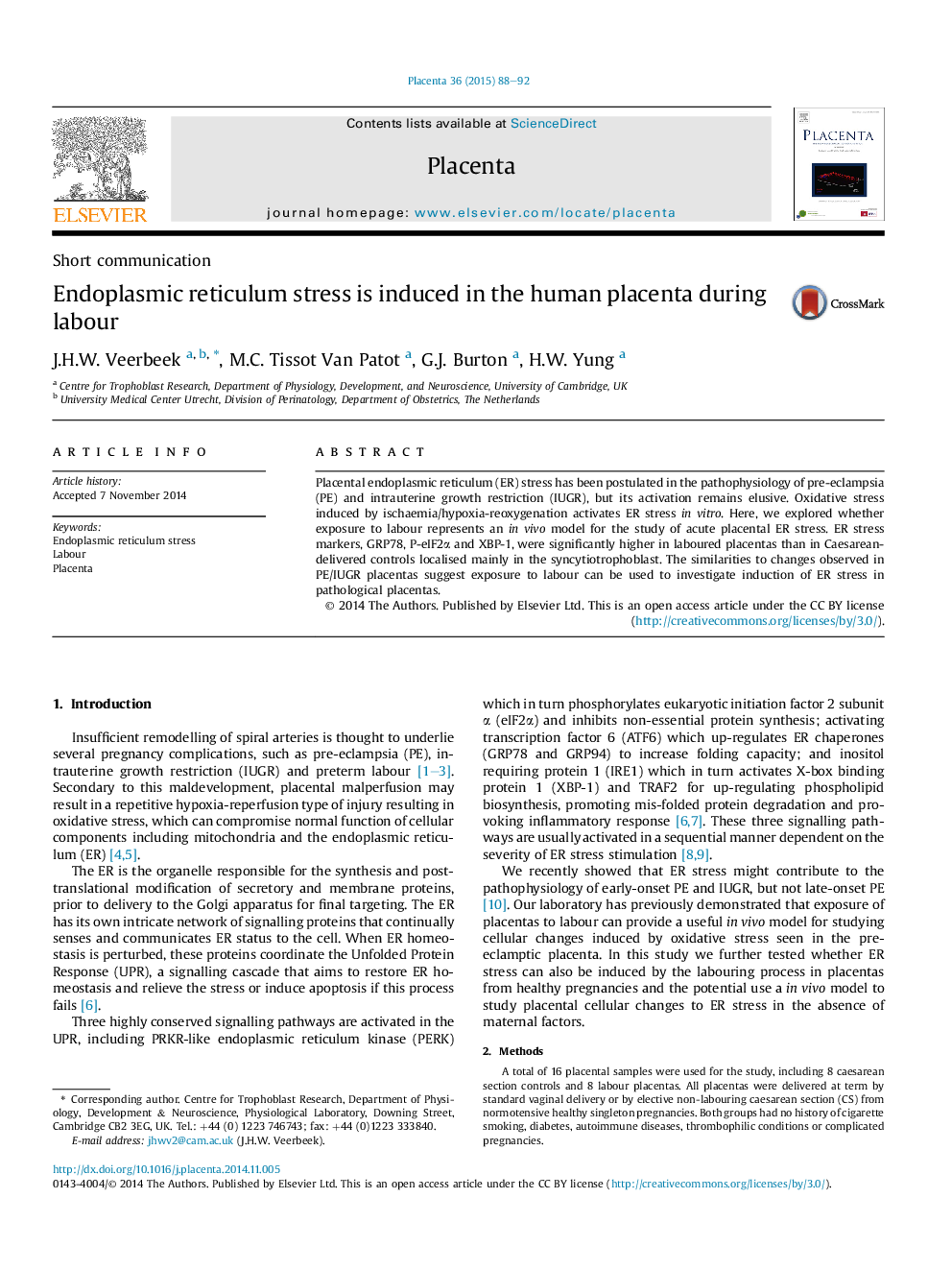| Article ID | Journal | Published Year | Pages | File Type |
|---|---|---|---|---|
| 5895113 | Placenta | 2015 | 5 Pages |
â¢The process of labour activates endoplasmic reticulum stress response pathways in the human placenta.â¢Labour may be used as an in vivo model to investigate molecular changes induced by endoplasmic reticulum stress.â¢Downstream consequences of endoplasmic reticulum stress may compromise placental function in laboured samples ex vivo.
Placental endoplasmic reticulum (ER) stress has been postulated in the pathophysiology of pre-eclampsia (PE) and intrauterine growth restriction (IUGR), but its activation remains elusive. Oxidative stress induced by ischaemia/hypoxia-reoxygenation activates ER stress in vitro. Here, we explored whether exposure to labour represents an in vivo model for the study of acute placental ER stress. ER stress markers, GRP78, P-eIF2α and XBP-1, were significantly higher in laboured placentas than in Caesarean-delivered controls localised mainly in the syncytiotrophoblast. The similarities to changes observed in PE/IUGR placentas suggest exposure to labour can be used to investigate induction of ER stress in pathological placentas.
